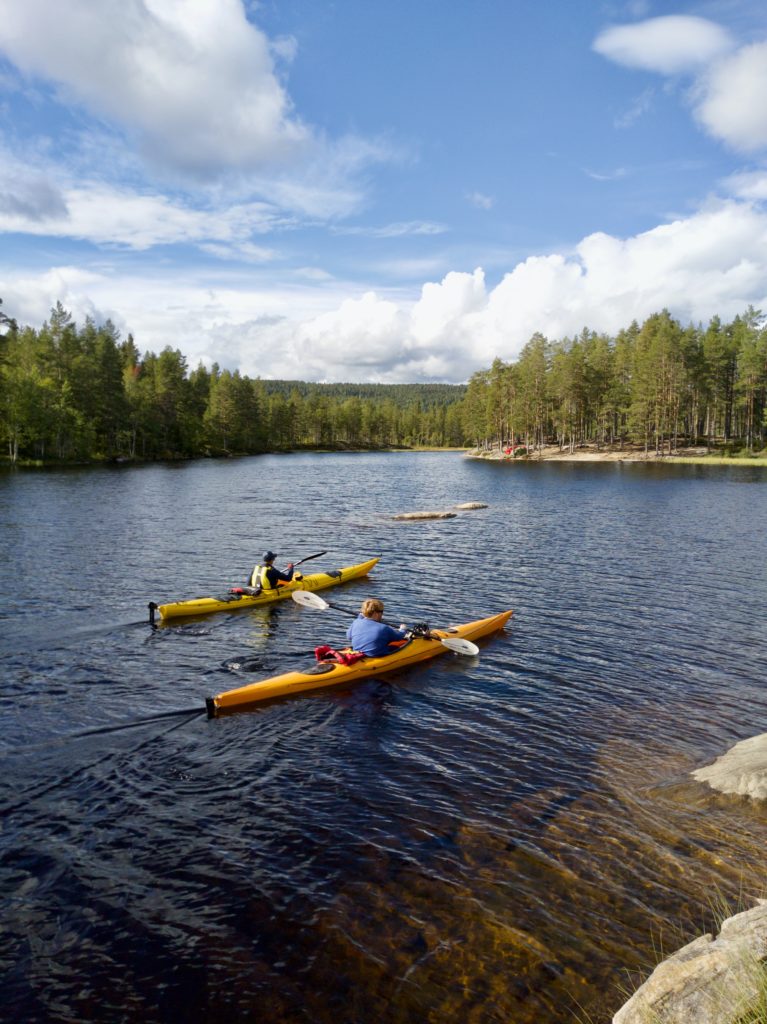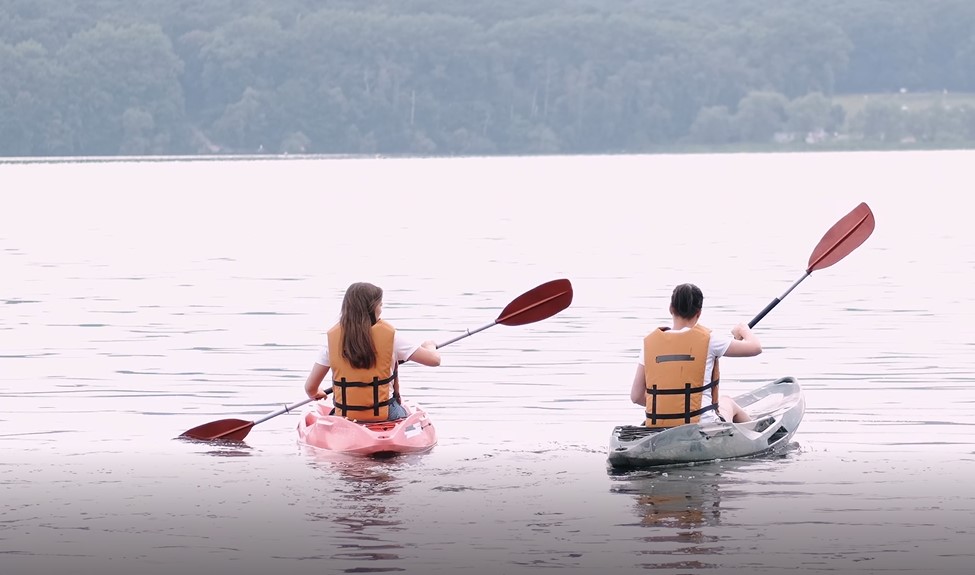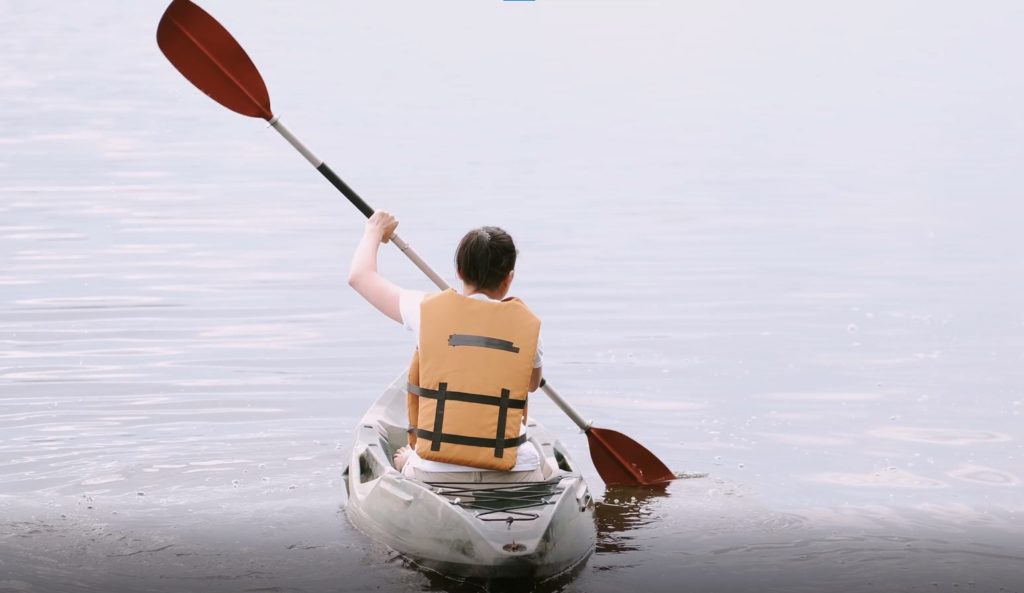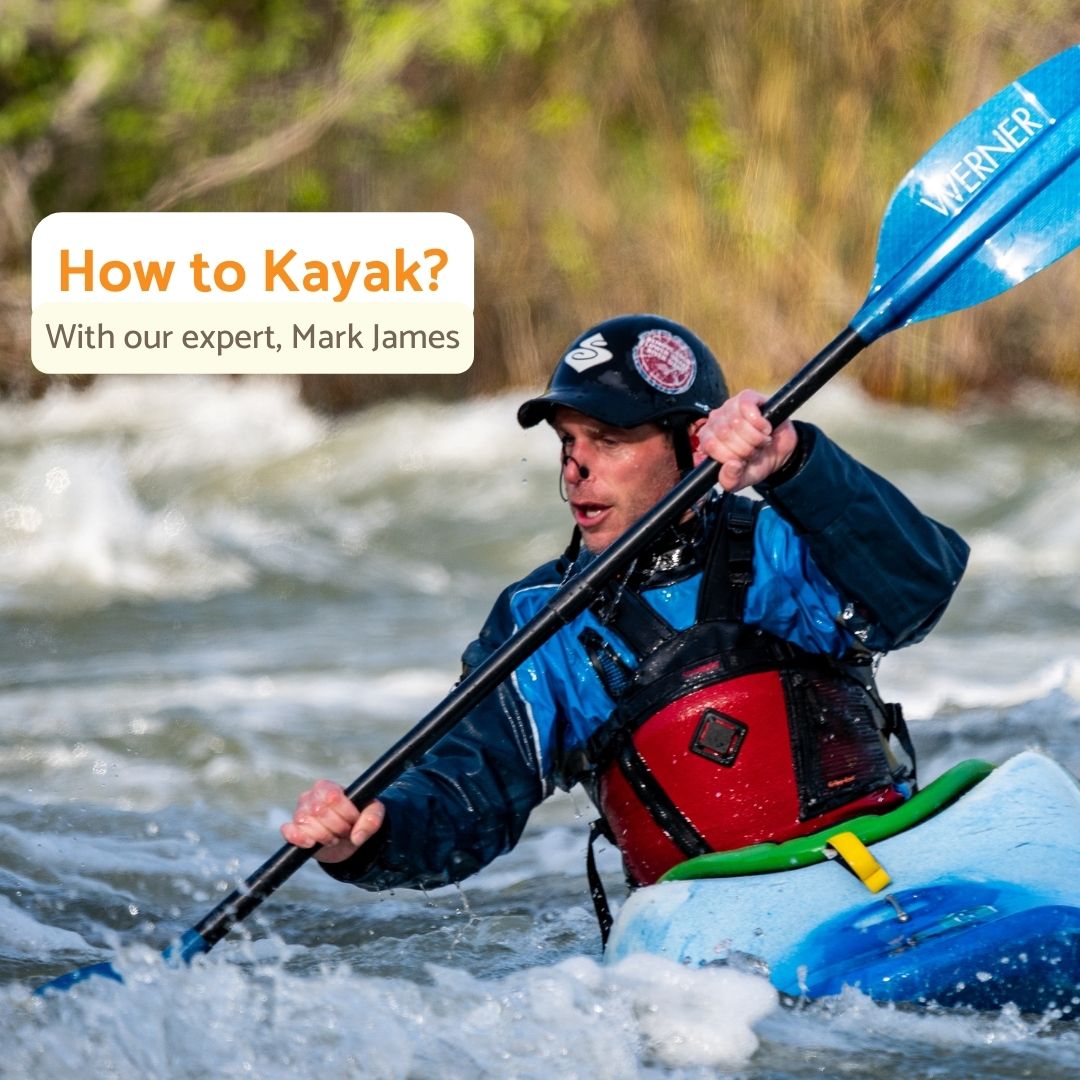Kayaking is a great activity to get in shape and spend time with your loved ones. Gather your friends and family and go on a picnic after a relaxing kayak activity on a lake. There are so many benefits to doing sports. And the kayaking activity will support your cardiovascular system without getting pressure on the joints and tissues. It is also great for strengthening your core, arm, back, shoulders and chest muscles. Moreover, you can kayak anywhere in any body of water. Although, if you are just starting out, it is better to go to a calm lake on a sunny day to maximize the comfort of your experience.
In this article, you will learn a few simple steps to start kayaking right away! So, keep reading to find our expert tips.

How Hard Is Kayaking?
Kayaking is not hard. Everyone can start to kayak right now with a few simple tips and lessons from our expert, Mark. But before we begin with the techniques for kayaking, let’s first discuss the needed equipment.
Equipment
If you are a first-timer who is still testing the waters and you don’t want to buy a kayak just yet, there are a few options on how to get started without the financial investment.
• Borrow a kayak from a friend. Go out with your friend and have fun.
• Rent a kayak from an adventure company. Companies that organize tours are also likely to provide gear to rent. So, check out.
• Go on an organized tour with an adventure touring company. We often provide kayaking as part of our hiking activities.
• Take classes. It is an option if you know an adventure company that offers classes. Plus, you will get in-depth knowledge and become an expert in a short amount of time.
Besides, the kayak you will also need a few other gadgets to prepare for your trip.
• A lifejacket that fits properly
• Paddle that is the right size for you
• Spray skirt in cold and rainy weather
How to Dress for Kayaking?
Depending on the weather you can choose to wear swimwear and shorts, a sun-shielding hat or a lightweight fleece jacket and vest or a spray jack/rain jacket and pants on cold and rainy days. Also, always choose fabrics that are noncotton and nonbinding. If the water is less than 15 Celsius degrees (60 F) always take a wetsuit.
Furthermore, you will need to carry:
• plenty of drinking water
• snacks
• first-aid kit
• signalling whistle
• watch to get back on time
• headlamp if it gets dark
Now that we’ve got everything ready and are well stocked for this lesson, we can start with the main instructions.
Although, before you start to paddle, it is good to recognize what type of kayak you have and what are some differences and advantages of different kayaks. For this example, today, we chose a kayak with a cockpit. The kayaking technique is similar to different types of kayaks, though it is important to pick one that you would feel comfortable with. If you would like to get some advice, get in touch with our expert Mark who can answer your questions and provide professional advice.
How Do You Sit in a Kayak?
Sit firmly upright in your kayak to keep your balance and power. If you can adjust your sit, make sure to make it comfortable by keeping your butt firmly against it. Then, make sure the balls of your feet are on the footpegs and your knees are slightly bent in firm contact with each side of the cockpit. It will ensure that you are in control when needing to move the kayak in a side-to-side motion. Also, your fit should be slightly loose, and not jammed-in so to make sure you can get out easily if needed.
How to Get into the Kayak from a Dock or a Shore?
Hopefully, by now you have your lifejacket on you and are ready to set the sails.
Launching a kayak from the shore may be slightly easier for beginners than a launch from a dock. It would be easier to keep your balance until you learn the ropes of it. However, both launches work in a similar way.
First, make sure to position the kayak in a perpendicular position across the water if you are on a shore and a horizontal position if you are on a dock.
If you are going for a shore launch, you want to find a rock-free gradual slope. On the contrary, if you are on a dock, you don’t need to look for a calm spot.
Then, you need to drag the kayak by holding the strap in the front and take it closer to the water. If you are there with a friend, you can ask them to hold the kayak for you and give you a bit of push.
Though, if you are alone, get the cockpit over the edge of the water with your free hand and with the other one holds the paddle behind your back.
Expert tip: Holding the paddle behind your back will prevent it from dropping in the water and floating away while you get into the kayak.
Then, sit on the edge of the kayak with one leg on the shore and one leg in the cockpit and try to carefully move your butt and bodyweight inside the cockpit. Sit firmly against the seat once you are in and extend your legs so that the feet are placed on the footpegs. Then give yourself a little bit of push by digging the blade into the shore and moving your weight forward. Though, it is a lot easier if there is someone to give you that push.
When you are on a dock, you won’t need to drag the kayak as it will already be in the water. However, it may be more difficult to get into the kayak as you would need to keep your balance. To do so, you will need to put your feet into the cockpit and balance the paddle on the edge of the dock while you seat.
You may notice that the kayak is tied to the dock, so you would want the dockmaster to help you untie it or do it yourself if that is possible.
How to Hold the Paddle?
To hold the paddle correctly, start by holding it horizontally in front of you while seated in the kayak. Then make sure your hands are stretched out a bit passed your shoulders. Then, keep the smooth side of the paddle facing towards you. Additionally, the flat horizontal line of the paddle should be kept on top when paddling.
Expert tip: Always make sure to inspect your blades before you go into the water so that they are aligned correctly as it is important to keep your balance in the water.
How to Paddle?
1. Stay upright and firmly grip the paddle to move the kayak
2. Place the paddle vertically and twist your torso in the direction of the paddle. If you paddle to the right, then twist slightly to the right. The force to paddle should come from your body core.
Expert tip: Normally when you paddle on the left side of the kayak, you will move to the right side of the water flow. And if you paddle from the right side, you will move to the left side of the flow.
3. Dig the blade into the water and keep your body upright to push forward. Dig the blade so it is just below the surface of the water and push it forward as you are sitting with your torso untwisted.


4. Repeat the motion on the other side to move forward.
5. Find your pace as you switch the paddle between the left and right sides of the kayak and move forward.
Alright, alright. Reading about how to paddle may not be as exciting as the actual fun you will get from the activity. That is why I’d be happy to show you a few tips and tricks on our next Arctic circle adventure. If you join us, we will explore the crystal clear waters of Norway in a responsible and authentic way.
How to Turn and Slow Down?
Turning is easy. Just remember to paddle in the opposite direction of the side you want to turn to. Normally, you will need to turn your torso slightly and move the paddle in a semi-circular motion to help you keep your balance and shift the kayak in the wanted direction. It is easier if you use a sweeping stroke to help you turn instead of paddling as normal.

In case you want to slow down, you need to paddle the same way you paddle forward but in reverse to the water flow. That will slow down the kayak.
If you want to move sideways like to position the kayak close to the dock, you need to take your paddle vertically into the water and make drawing strokes to bring yourself closer to the dock.
How to Get Out?
Getting out is also easier on the shore than on a dock. Although, if you are close to a dock, make the drawing sweet towards the direction of the dock to park parallel to the dock. Then, use the dock to hold yourself and keep your balance while you get out of the kayak. Go slowly and keep your weight low that will help you keep the kayak balanced.
In case you are on a shore, then just paddle forward towards the shore and continue paddling until the front of the kayak is on the ground. Then you can just step out of the water.
Hoping that this article is a helpful guide in your kayaking adventure. Have fun, and see you soon.
Note: This article has been revised by our expert, Mark James. Mark has long years of experience with kayaking in the roundabouts of Norway and has won a few regional competitions. Currently, he shares his passion for kayaking and teaching the ins and outs of the craft to our guests.

Mark James
Professional guide and expert in kayaking at [company name].
I joined the Artic Circle Outdoor Adventure with my friends. And we are really lucky to have had Mark as our guide. While kayaking he was really patient with my friends who have a different level of kayaking experience, and some were just beginners. They really enjoyed the experience thanks to him, and we are happy to have picked the company to provide the service.
— Mark Steward, a happy-go-lucky customer
